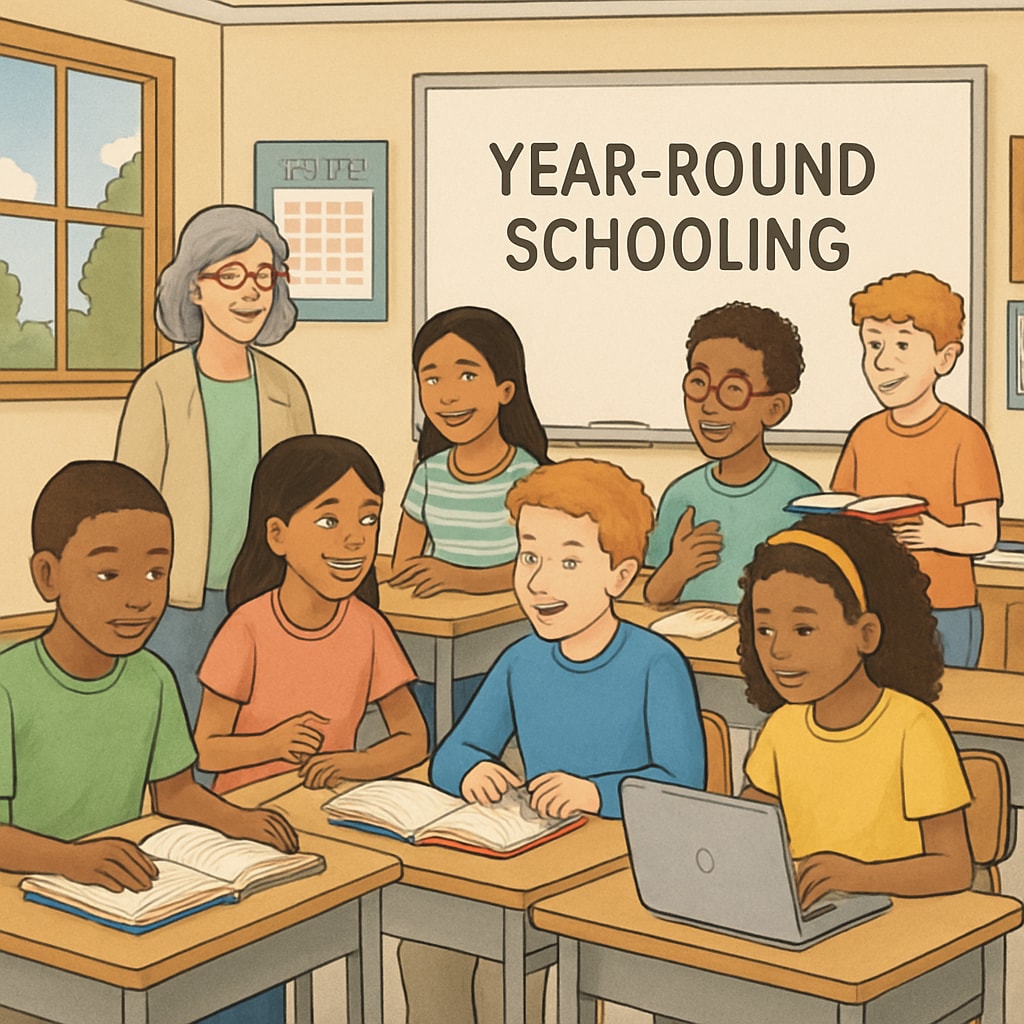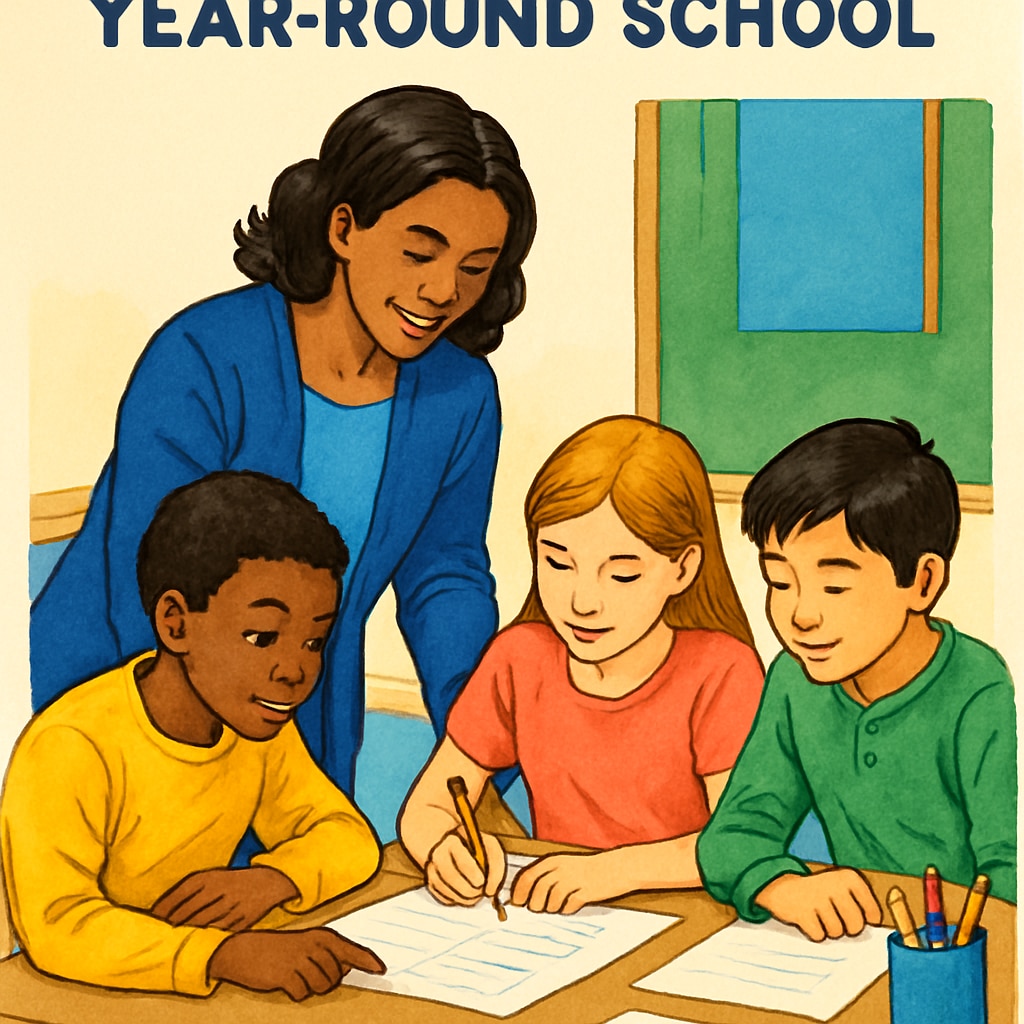Year-round schooling, a transformative shift in educational structure, offers a compelling alternative to the traditional long summer break. By addressing the well-documented “summer slide” — the loss of knowledge over extended breaks — this innovative model ensures better knowledge retention, more balanced learning opportunities, and a sustainable academic rhythm for K-12 students. As education systems explore ways to improve outcomes, year-round schooling emerges as a promising solution to enhance student performance and long-term memory retention.
Understanding the Year-Round School Model
Unlike the traditional school calendar, which typically includes a 10-12 week summer break, year-round schooling redistributes vacation time throughout the year. One popular approach is the “45-15” model, where students attend school for 45 days and then take a 15-day break. This structure eliminates the prolonged summer break, providing shorter but more frequent intermissions. Advocates argue that this approach minimizes learning loss and allows students to stay consistently engaged with their studies.

Addressing “Summer Slide” Through Year-Round Education
One of the primary benefits of year-round schooling is its ability to combat the “summer slide.” Research from the National Summer Learning Association shows that students can lose up to two months of mathematical and literacy skills during the summer break. This phenomenon disproportionately affects students from low-income families, who may lack access to educational resources during the break. By shortening the time away from school, year-round education ensures that students retain more of what they learn and require less review at the start of a new term.
Additionally, this model provides consistent opportunities for reinforcement. Shorter breaks prevent significant gaps in learning, making it easier for students to build upon previously acquired knowledge without the need for extensive reteaching.
Balancing Academic Rigor with Mental Wellness
Beyond improving knowledge retention, year-round schooling offers a balanced approach to education. Frequent breaks help students recharge and avoid burnout. Teachers also benefit from this schedule, as they can plan lessons more effectively and maintain consistent engagement with their students. The regular intervals between work and rest contribute to better mental health for both students and educators.
Moreover, this structure aligns with modern demands for flexible schedules. Parents can plan vacations during off-peak times, avoiding the crowded summer travel season. For schools, the staggered schedule alleviates logistical pressures, such as overcrowding, by allowing multi-track systems where different groups of students attend at different times.

Challenges and Considerations
While the benefits of year-round schooling are significant, it is not without challenges. Transitioning to this model requires careful planning and community buy-in. Some parents and educators may resist the change, citing disruptions to traditional family routines or extracurricular activities. Additionally, schools must address logistical issues, such as ensuring facilities are equipped for year-round use and adjusting curricula to fit the new calendar.
However, these challenges can be mitigated with thoughtful implementation. For example, flexible scheduling can accommodate extracurricular programs, and professional development for teachers can help them adapt to the new system. By fostering open communication with stakeholders, schools can build support for this innovative approach.
The Future of Year-Round Schooling
As education systems worldwide seek to improve student outcomes, year-round schooling offers a viable alternative to the traditional model. By reducing knowledge loss, promoting balanced learning, and supporting mental well-being, this approach aligns with the needs of modern learners. While it may not be a one-size-fits-all solution, it provides valuable insights into how education can evolve to meet the demands of the 21st century.
In conclusion, year-round schooling represents a bold step toward reimagining education. By addressing the “summer slide” and fostering consistent engagement, this model holds the potential to transform how students learn and retain knowledge. As more schools explore its implementation, the future of education may become more dynamic, inclusive, and effective.
Readability guidance: Short paragraphs and clear headings enhance readability. Lists and examples are used to clarify points. Transition words such as “however,” “in addition,” and “as a result” ensure smooth flow. The use of plain language with occasional academic terms ensures accessibility for a broad audience.


